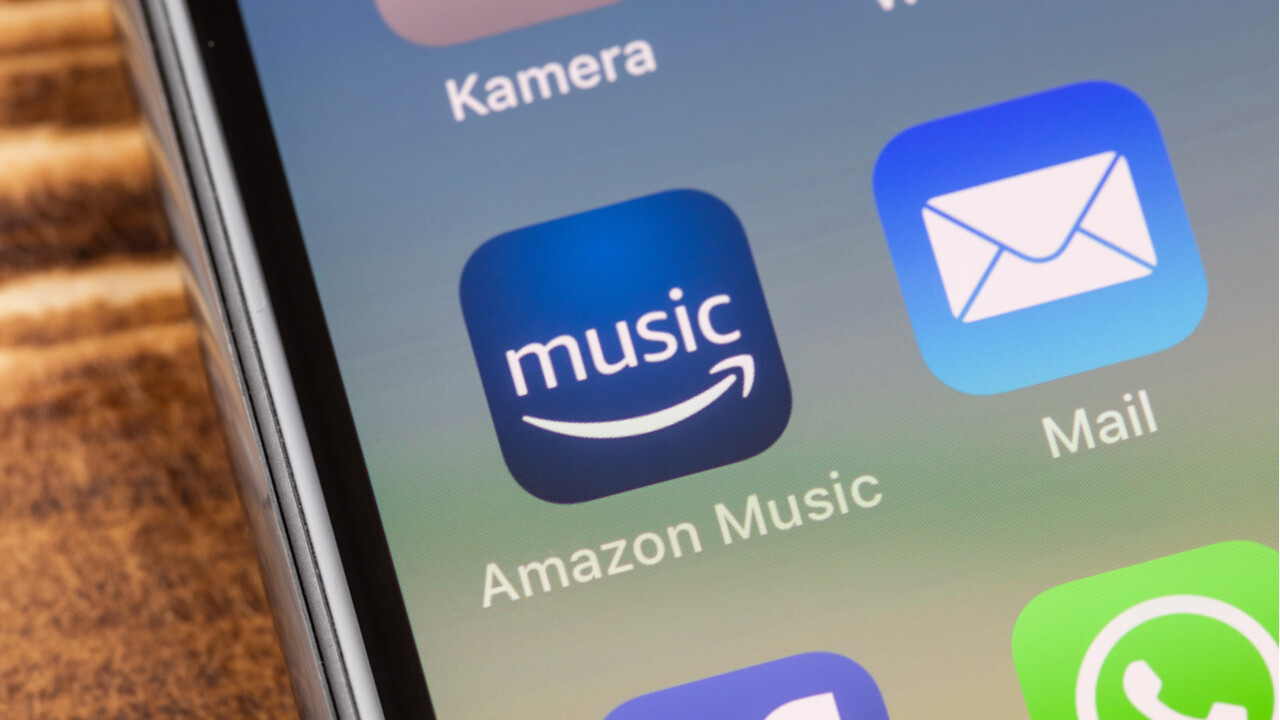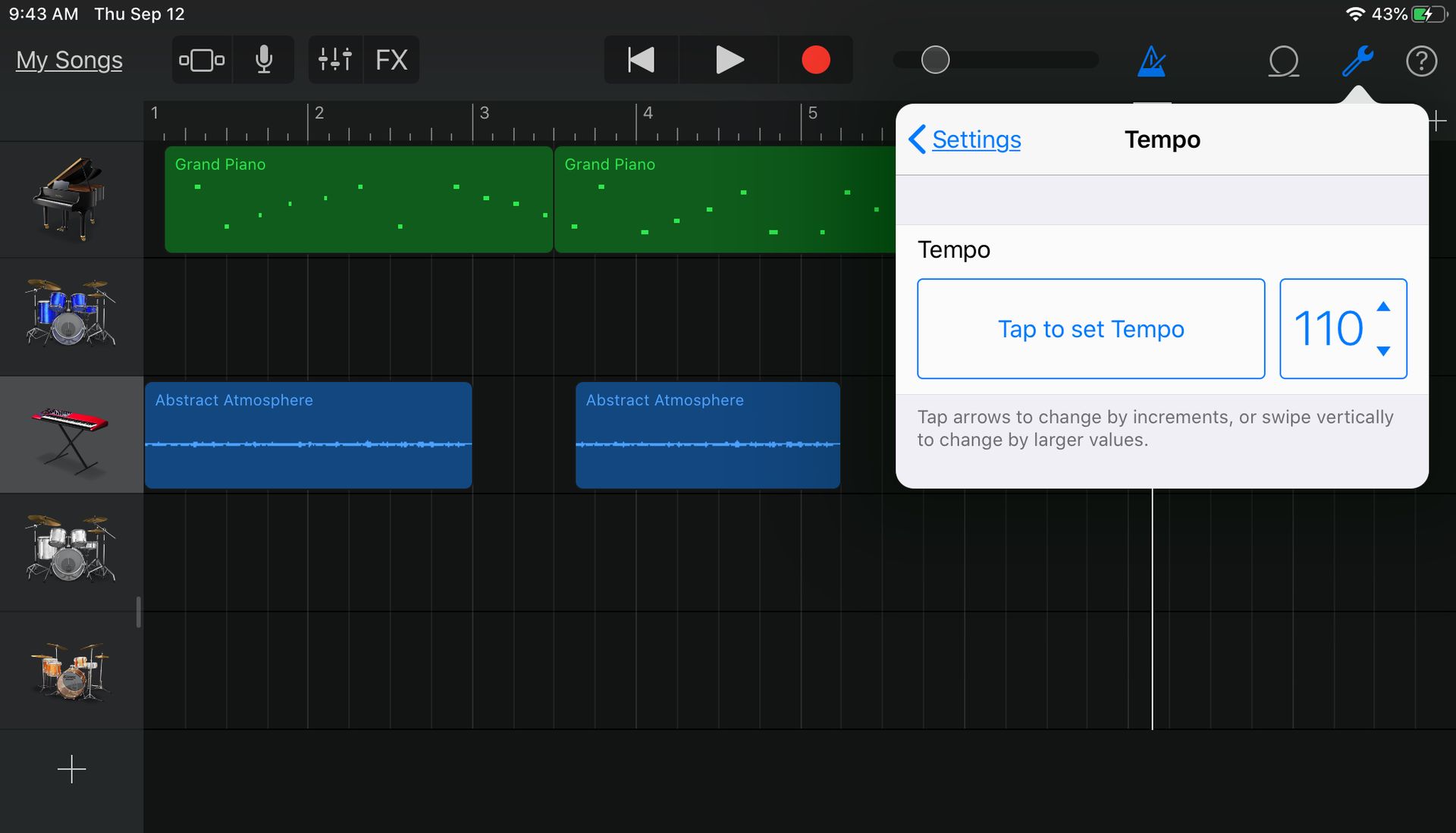Home>Devices & Equipment>Streaming>How Has Streaming Changed The Music Industry


Streaming
How Has Streaming Changed The Music Industry
Published: March 7, 2024
Streaming has revolutionized the music industry, transforming how music is consumed and distributed. Discover the impact of streaming on the music business.
(Many of the links in this article redirect to a specific reviewed product. Your purchase of these products through affiliate links helps to generate commission for AudioLover.com, at no extra cost. Learn more)
Table of Contents
Introduction
The advent of streaming technology has revolutionized the music industry in unprecedented ways. With the rise of digital platforms and the widespread availability of high-speed internet, music consumption has undergone a remarkable transformation. This shift has not only altered the way people access and listen to music but has also significantly impacted the dynamics of the industry as a whole.
Streaming has fundamentally changed the way music is distributed, marketed, and monetized. It has empowered both established artists and emerging talents to reach global audiences with greater ease and efficiency. As a result, the traditional gatekeepers of the music industry have been challenged, leading to a democratization of the music landscape.
In this article, we will delve into the multifaceted impact of streaming on the music industry, exploring its influence on music consumption patterns, revenue streams for artists, marketing strategies, music trends, and the challenges and opportunities it presents. By examining these key areas, we can gain a comprehensive understanding of how streaming has reshaped the music industry and continues to shape its trajectory in the digital age.
The Rise of Streaming Platforms
The music industry has experienced a seismic shift with the rise of streaming platforms. These platforms, such as Spotify, Apple Music, and Amazon Music, have fundamentally altered the way people access and consume music. Unlike traditional methods of purchasing physical albums or digital downloads, streaming platforms offer a vast library of songs that can be accessed on-demand, anytime and anywhere.
One of the key factors driving the popularity of streaming platforms is the convenience they offer. With a few taps on a smartphone or clicks on a computer, users can instantly access millions of songs from a diverse range of artists and genres. This accessibility has redefined the music listening experience, allowing for seamless integration into daily routines, whether during commutes, workouts, or leisure time.
Moreover, the subscription-based model of streaming platforms has ushered in a new era of affordability and flexibility for music enthusiasts. Users can choose from various subscription tiers, offering ad-supported free listening or premium ad-free experiences. This flexibility has significantly lowered the barrier to entry for accessing a vast catalog of music, making it more inclusive and appealing to a broader audience.
The rise of streaming platforms has also catalyzed a paradigm shift in the way artists and record labels distribute their music. Independent artists, in particular, have leveraged these platforms to bypass traditional gatekeepers and directly connect with their fan base. This direct-to-consumer approach has empowered artists to maintain creative control and build a loyal following without being solely reliant on traditional record deals.
Furthermore, the algorithms and personalized playlists offered by streaming platforms have transformed music discovery. Through sophisticated recommendation systems, users are exposed to a diverse array of artists and songs tailored to their preferences. This has not only facilitated the discovery of new music but has also provided emerging artists with opportunities for exposure and growth.
In essence, the rise of streaming platforms has democratized music consumption, providing unparalleled accessibility, affordability, and discovery. This shift has not only reshaped the way people engage with music but has also redefined the dynamics of the music industry, paving the way for a more inclusive and interconnected global music community.
Impact on Music Consumption
The impact of streaming on music consumption has been profound, reshaping the habits and preferences of listeners worldwide. With the advent of streaming platforms, the traditional model of purchasing and owning music has given way to a culture of access and exploration. This shift has had far-reaching implications for both listeners and the music industry as a whole.
Streaming platforms have ushered in an era of unparalleled convenience, allowing users to access vast libraries of music with a few taps on their devices. This ease of access has transformed the way people integrate music into their daily lives, whether it's creating personalized soundtracks for workouts, discovering new artists during commutes, or curating playlists for social gatherings. The seamless availability of music has blurred the boundaries between traditional listening environments, enabling a more fluid and immersive music consumption experience.
Moreover, the subscription-based model of streaming platforms has democratized music consumption by offering affordable access to an extensive catalog of songs. This affordability has expanded the listener base, making music consumption more inclusive and accessible to a broader audience. Additionally, the option for ad-supported free listening has further lowered barriers to entry, allowing individuals to explore and engage with music without financial constraints.
The personalized recommendation algorithms employed by streaming platforms have also revolutionized music discovery. By analyzing listening patterns and user preferences, these platforms curate customized playlists and recommendations, introducing listeners to a diverse array of artists and genres. This tailored approach to music discovery has not only enriched the listening experience but has also facilitated the exploration of new music, enabling listeners to venture beyond familiar territories and embrace a more diverse range of musical expressions.
Furthermore, the shift towards streaming has redefined the concept of music ownership, emphasizing access and exploration over possession. This change in mindset has liberated listeners from the constraints of physical or digital ownership, allowing them to engage with music as a fluid and dynamic experience rather than a static commodity.
In essence, streaming has transformed music consumption into a fluid, accessible, and exploratory journey, empowering listeners to engage with music in a more immersive and diverse manner. This shift has not only redefined the way people interact with music but has also catalyzed a fundamental evolution in the dynamics of music consumption, shaping the cultural landscape of the digital age.
Changes in Revenue Streams for Artists
The emergence of streaming platforms has brought about a significant transformation in the revenue streams for artists, reshaping the way they earn income from their music. In the traditional music industry model, artists primarily relied on album sales, physical merchandise, and live performances as their main sources of revenue. However, the advent of streaming has introduced a new paradigm, fundamentally altering the dynamics of artist compensation and monetization.
One of the most notable changes in revenue streams for artists is the shift from album sales to streaming royalties. In the past, artists depended heavily on album sales for generating income. With the rise of streaming platforms, the focus has shifted towards accumulating streams, where artists earn royalties based on the number of times their songs are played. While this transition has posed challenges in terms of the perceived value of individual streams compared to album sales, it has also opened up opportunities for artists to reach a global audience and generate revenue from a diverse range of listeners.
Additionally, streaming platforms have provided artists with new avenues for monetization through features such as personalized playlists, algorithmic recommendations, and curated content. By leveraging these tools, artists can increase their visibility and engagement, leading to higher streaming numbers and, consequently, enhanced revenue streams. Furthermore, the direct-to-fan engagement facilitated by streaming platforms has empowered artists to cultivate dedicated fan bases, leading to increased support through streaming, merchandise sales, and crowdfunding initiatives.
Moreover, the accessibility and global reach of streaming platforms have expanded opportunities for artists to capitalize on their music through licensing and synchronization deals. With the potential for their songs to be featured in movies, TV shows, commercials, and video games, artists can tap into additional revenue streams and exposure, leveraging the digital footprint created by streaming platforms to attract potential licensing opportunities.
Furthermore, the data-driven nature of streaming platforms has enabled artists to gain valuable insights into listener demographics, geographic trends, and audience engagement metrics. This data-driven approach equips artists with the knowledge to tailor their marketing strategies, identify target markets, and optimize tour schedules, ultimately maximizing their revenue potential and fostering sustainable growth in the digital era.
In essence, the advent of streaming has revolutionized the revenue streams for artists, ushering in a new era of monetization that is characterized by global reach, data-driven insights, and diversified income sources. While the transition from traditional revenue models has presented challenges, it has also opened up unprecedented opportunities for artists to thrive in an evolving music industry landscape.
Shift in Marketing and Promotion Strategies
The rise of streaming platforms has catalyzed a profound shift in marketing and promotion strategies within the music industry. Traditional methods of promoting music, such as radio airplay, physical distribution, and reliance on chart rankings, have been augmented and, in some cases, supplanted by innovative digital approaches tailored to the streaming landscape.
One of the most notable changes in marketing and promotion strategies is the emphasis on playlist placement and algorithmic recommendations. With streaming platforms utilizing sophisticated algorithms to curate personalized playlists for users, securing placement on popular playlists has become a pivotal marketing strategy for artists and record labels. The visibility and exposure gained from playlist inclusion can significantly impact an artist's reach and listener engagement, ultimately driving streaming numbers and cultivating a dedicated fan base.
Furthermore, the direct-to-consumer nature of streaming platforms has empowered artists to engage with their audience in unprecedented ways. Through social media, live streaming, and interactive content, artists can forge authentic connections with their fans, fostering a sense of community and loyalty. This direct engagement not only serves as a promotional tool but also humanizes the artist's brand, creating a deeper emotional resonance with listeners.
Moreover, the data-driven insights provided by streaming platforms have revolutionized marketing strategies, enabling targeted and efficient promotional campaigns. Artists and record labels can leverage streaming data to identify demographic trends, geographic hotspots, and listener preferences, allowing for precise targeting of promotional efforts. This data-driven approach has enhanced the efficiency and effectiveness of marketing campaigns, optimizing promotional spend and maximizing the impact of promotional activities.
Additionally, the global reach of streaming platforms has expanded the horizons of international marketing and promotion. Artists can now connect with audiences across the globe, transcending geographical barriers and cultural boundaries. This global accessibility has prompted a reevaluation of marketing strategies, leading to the localization of promotional content, language-specific campaigns, and targeted outreach to diverse international markets.
In essence, the shift in marketing and promotion strategies driven by streaming platforms has ushered in a new era of targeted, data-driven, and direct-to-consumer promotional approaches. This evolution has not only redefined the dynamics of music marketing but has also empowered artists and record labels to engage with audiences in more personalized and impactful ways, shaping the future of music promotion in the digital age.
Influence on Music Trends and Genres
The influence of streaming on music trends and genres has been profound, reshaping the sonic landscape and redefining the dynamics of musical evolution. Streaming platforms have not only revolutionized the way music is consumed but have also played a pivotal role in shaping the emergence, proliferation, and fusion of diverse musical trends and genres.
One of the most notable impacts of streaming on music trends is the democratization of genre exploration. With the vast libraries of streaming platforms at their fingertips, listeners have been empowered to venture beyond traditional genre boundaries, embracing a more eclectic and diverse range of musical expressions. This newfound freedom of exploration has led to a blurring of genre distinctions, giving rise to hybrid genres and cross-pollination of musical styles. As a result, artists have been emboldened to experiment with unconventional fusions, leading to the emergence of innovative and boundary-defying musical trends.
Moreover, the data-driven nature of streaming platforms has facilitated the rapid dissemination of emerging music trends. Through algorithmic recommendations and personalized playlists, streaming platforms have become catalysts for the discovery and propagation of new and niche genres. Artists operating outside the mainstream spotlight have found avenues for exposure and growth, leveraging streaming platforms to connect with niche audiences and catalyze the rise of previously overlooked genres.
The global reach of streaming platforms has also contributed to the globalization of music trends. Artists from diverse cultural backgrounds and geographic locations can now reach international audiences with unprecedented ease, transcending traditional barriers to entry. This global accessibility has led to the cross-pollination of musical influences, resulting in the fusion of traditional and contemporary elements from different regions, thereby enriching the global musical tapestry.
Furthermore, streaming platforms have redefined the concept of musical trends by providing a platform for niche and independent artists to thrive. Previously marginalized genres and underground movements have found a home in the digital realm, fostering vibrant communities and subcultures. This newfound visibility has challenged the dominance of mainstream trends, leading to a more decentralized and inclusive landscape where niche genres can flourish and exert influence on the broader musical zeitgeist.
In essence, streaming platforms have not only reshaped the consumption of music but have also been instrumental in shaping the evolution of musical trends and genres. The democratization of genre exploration, the rapid dissemination of emerging trends, the globalization of musical influences, and the empowerment of niche artists have collectively contributed to a dynamic and diverse musical ecosystem, marking a new chapter in the evolution of music in the digital age.
Challenges and Opportunities for the Music Industry
The advent of streaming technology has brought forth a myriad of challenges and opportunities for the music industry, reshaping its landscape and presenting both obstacles and avenues for growth. Understanding and navigating these dynamics is crucial for stakeholders to adapt to the evolving digital paradigm.
Challenges
-
Monetization and Fair Compensation: While streaming platforms offer global reach and accessibility, the shift from physical sales to streaming has raised concerns about fair compensation for artists. The per-stream royalty rates and the perceived devaluation of music have sparked debates about equitable remuneration, especially for independent and emerging artists.
-
Discoverability Amid Abundance: The vast catalog of music available on streaming platforms has led to a paradox of choice, making discoverability a significant challenge. With millions of songs vying for attention, breaking through the noise and capturing listener engagement has become increasingly competitive, particularly for lesser-known artists.
-
Dependency on Algorithmic Recommendations: While algorithmic recommendations have facilitated music discovery, there is a risk of over-reliance on these systems, potentially homogenizing listening habits and limiting exposure to diverse genres and independent artists. Balancing algorithmic curation with human curation and editorial input remains a pertinent challenge.
-
Sustainability of the Music Ecosystem: The democratization of music creation and distribution has led to an oversaturation of content, raising concerns about the sustainability of the music ecosystem. Ensuring a supportive environment for artists, fostering diversity, and preserving the cultural value of music amidst the digital deluge pose significant challenges.
Opportunities
-
Global Reach and Audience Engagement: Streaming platforms have dismantled geographical barriers, offering artists unprecedented access to global audiences. This global reach presents opportunities for cultural exchange, international collaboration, and the cultivation of diverse fan bases, transcending traditional limitations and expanding the horizons of artistic expression.
-
Data-Driven Insights and Targeted Marketing: The wealth of data provided by streaming platforms empowers artists and record labels with actionable insights into listener demographics, preferences, and geographic trends. Leveraging this data for targeted marketing, personalized content creation, and strategic decision-making opens new frontiers for audience engagement and revenue optimization.
-
Direct-to-Fan Engagement and Monetization: Artists can now forge direct connections with their fan base through social media, live streaming, and exclusive content, fostering a sense of community and loyalty. This direct engagement not only serves as a promotional tool but also creates opportunities for diversified monetization through merchandise sales, crowdfunding, and fan-supported initiatives.
-
Innovation in Music Creation and Collaboration: The digital landscape has catalyzed innovation in music creation, production, and collaboration. Artists can explore new sonic territories, experiment with multimedia experiences, and engage in virtual collaborations, transcending physical limitations and redefining the creative process.
In navigating these challenges and seizing the opportunities presented by streaming, the music industry stands at a pivotal juncture, poised to embrace innovation, foster inclusivity, and redefine the boundaries of artistic expression in the digital age.
Conclusion
The transformative impact of streaming on the music industry is undeniable, reshaping the way music is consumed, distributed, and monetized. The rise of streaming platforms has democratized access to music, empowering listeners to explore diverse genres and emerging artists with unprecedented ease. This shift has not only revolutionized music consumption habits but has also catalyzed the emergence of innovative marketing strategies, diversified revenue streams for artists, and the evolution of musical trends and genres.
As streaming continues to redefine the dynamics of the music industry, it presents a spectrum of challenges and opportunities. The need for equitable compensation for artists, the quest for discoverability amidst abundance, and the sustainability of the music ecosystem are among the challenges that demand thoughtful consideration and proactive solutions. However, the global reach and audience engagement facilitated by streaming platforms, coupled with data-driven insights, direct-to-fan engagement, and avenues for creative innovation, underscore the vast opportunities that lie ahead.
In navigating this dynamic landscape, the music industry is poised to embrace innovation, foster inclusivity, and redefine the boundaries of artistic expression in the digital age. By leveraging the power of streaming technology, stakeholders have the potential to cultivate a vibrant and sustainable music ecosystem that celebrates diversity, empowers artists, and resonates with audiences on a global scale.
The era of streaming has not only transformed the music industry but has also redefined the relationship between artists and listeners, fostering a more interconnected and immersive musical experience. As the journey of streaming continues to unfold, it holds the promise of shaping a future where creativity knows no bounds, where music transcends borders, and where the artistry of sound resonates with the hearts and minds of a global audience.











